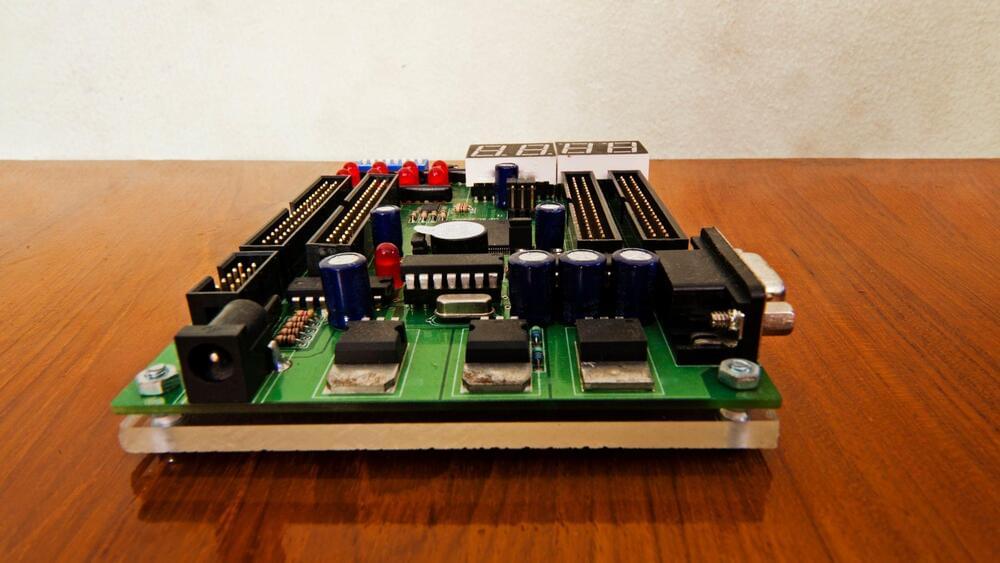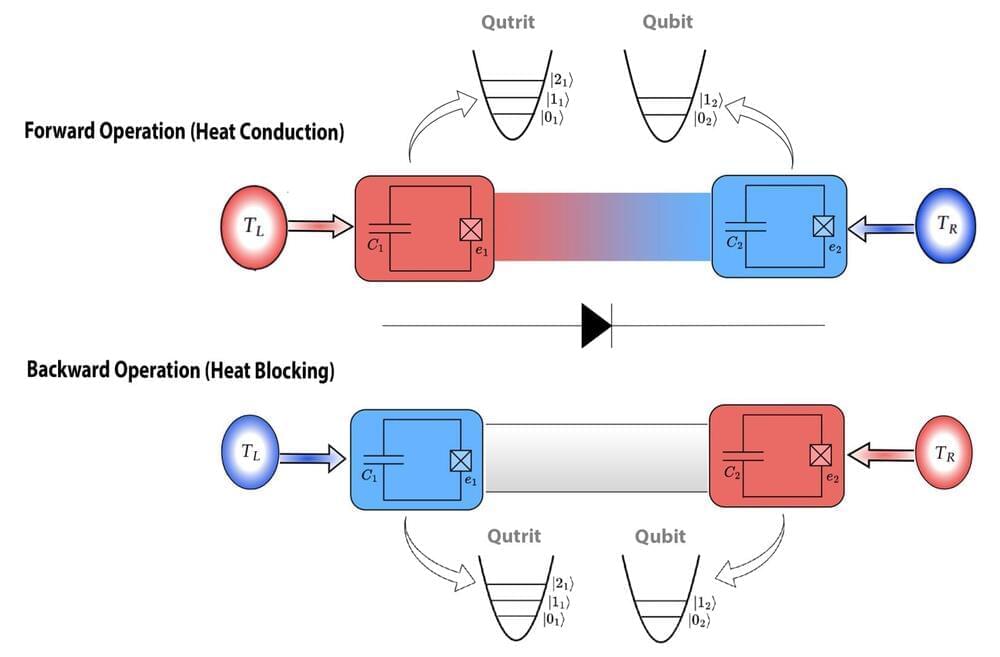The world’s first self-charging energy device integrates supercapacitors and solar cells for efficient solar energy capture and storage.


It could revolutionize electric vehicles and aircraft.

Summary: This article explores how humanity has advanced its knowledge of biodiversity over time, from folk wisdom to modern databases. It highlights how technology has made information about life on Earth accessible to everyone and argues we should be optimistic about the future of taxonomy and conservation.
Alone in the forest, the modern person might find it difficult to identify a beech tree. Compared to indigenous shamans who forage thousands of medicinal plants, we are deeply disconnected from nature. But even if our personal understanding of nature is in decline, as a species, we’ve never known more about the natural world.
The fact is, while it is valuable, indigenous knowledge is often limited to the local area, difficult to distinguish from myth and ritual, and, if passed on orally, easy to lose. Literate naturalists faced similar problems. Aristotle recorded many species in writing, but much of his work was lost. Most traditional written research that survived to modern times is narrow in scope, disorganized, and spread throughout obscure tomes.
Charging an electric vehicle can be daunting sometimes, but Tesla, the biggest player in the game, has long figured it out. Thanks to its extensive Supercharger network of DC fast chargers that are tightly integrated with the cars’ software, it’s extremely easy to plan a route in a Tesla EV.
The infotainment system shows the driver exactly how many charging stops are needed, how much juice will be in the battery when arriving at a charging stop and how much energy will be added during the charging stop. It’s all seamless, and it’s one of the biggest reasons why people buy Teslas to begin with.
However, during the holidays, even Tesla owners might have to wait a little longer during charging stops simply because all the stalls are already in use when arriving at a Supercharger. More people are traveling, so more EV owners are out there charging their cars. However, Tesla seems to have a solution for this, as well.
Researchers in Japan made a groundbreaking discovery that could bring us closer to sustainable energy from nuclear fusion reactors, paving the way for longer-lasting, more efficient clean energy systems.
In a recent study, the team developed protective coatings to enhance the durability of materials used in fusion reactors, addressing a key challenge: material degradation from extreme heat and corrosive liquid metal coolants.
Fusion reactors, which mimic the sun’s energy production process, hold huge potential as a limitless source of clean energy. However, their intense environment makes it difficult to find materials that can endure prolonged exposure to high temperatures and corrosive coolants like lithium-lead alloy.
The 21st century faces an unprecedented energy challenge that demands innovative solutions. This video explores Zero Point Energy (ZPE), a groundbreaking concept rooted in quantum mechanics that promises limitless, clean, and sustainable power. Learn how the quantum vacuum—long considered empty—is teeming with virtual particles and untapped energy potential. From understanding the Casimir effect to leveraging advanced technologies like fractal energy collectors and quantum batteries, this video details how ZPE could revolutionize industries, mitigate climate change, and empower underserved communities. Dive into the science, challenges, and global implications of a ZPE-powered future.
#ZeroPointEnergy #CleanEnergy #QuantumVacuum #Sustainability #EnergyInnovation #ZPE #QuantumMechanics #RenewableEnergy #GreenTech #CasimirEffect #QuantumEnergy #EnergySustainability #ClimateSolutions #FractalEnergy #QuantumBatteries #AdvancedTechnology #LimitlessEnergy #Nanotechnology #FutureOfEnergy #CleanPower

The work-related death rate fell 95% in the U.S. between 1913 & 2015.
Labor union activism is often credited with the decline, but economic expansion is what made better working conditions possible in the first place.
Read more about this trend.
All economic activity involves some degree of physical risk. Credible data on work injuries and fatalities among our agrarian ancestors are difficult to come by. Yet agricultural work must have been quite unappealing, considering that so many people in the early 19th century preferred factory work over farm work.
Even today, notes the U.S. Department of Labor, agriculture “ranks among the most dangerous industries.” In 2011, the “fatality rate for agricultural workers was 7 times higher than the fatality rate for all workers in private industry; agricultural workers had a fatality rate of 24.9 deaths per 100,000, while the fatality rate for all workers was 3.5.” Likewise, the Workplace Safety and Health (WSH) Institute in Singapore found that global fatality rates per 100,000 employees in agriculture ranged from 7.8 deaths in high-income countries to 27.5 deaths in the Southeast Asia and Western Pacific regions in 2014. Manufacturing deaths ranged from 3.8 in high-income countries to 21.1 in Africa.

Heat management at the nanoscale has long been a cornerstone of advanced technological applications, ranging from high-performance electronics to quantum computing. Addressing this critical challenge, we have been deeply intrigued by the emerging field of thermotronics, which focuses on manipulating heat flux in ways analogous to how electronics control electric energy. Among its most promising advancements are quantum thermal diodes, which enable directional heat control, and quantum thermal transistors, which regulate heat flow with precision.
Thermal diodes, much like their electrical counterparts, provide unidirectional heat transfer, allowing heat to flow in one direction while blocking it in the reverse. We find this capability revolutionary for heat management, as it has the potential to transform numerous fields.
For instance, thermal diodes can significantly improve the cooling of high-performance electronics, where heat dissipation is a major bottleneck. They could also enable more efficient energy harvesting by converting waste heat into usable energy, contributing to sustainability efforts.
Removing Space Junk is an issue, but technology is advancing so solutions are available, but people are too stupid to know what they are. There is a demand to remove space junk. In my Marketing class I was taught Marketing starts with demand. No one has yet to develop a solution. Space Junk has recyclable content, which money is spent on mining to develop. 🙄 Many people spend money many ways without thinking of its impact. Musk spent like 40 billion for Twitter instead of finding a solution for recycling “Space Waste”, which adds value to his companies.
“The Universe is infinite But space has its limits Rockets a launching Sat’lites are orbiting Explosions in Space Oh what a waste Fragments go flying And we go crying “Space junk we’ve got” Man-made or not Then comes Kessler Who knows the better When things collide Their debris do multiply Thanks to partnering And NASA’s gathering We look for ways To manage the spray” – S. Thuy Nguyen-Onstott.
International Space Station (ISS)Orbital Debris Collision Avoidance Process
One may ask, “What is Orbital Debris?” Although we don’t see space junk in the sky, beyond the clouds and further than the eye can see, it enters low Earth orbit (LEO).

Botanists discovered a new lipstick vine species, Aeschynanthus pentatrichomatus, in the Philippine rainforest. Found during a 2022 expedition, the plant is critically endangered and underscores the need for conservation in biodiversity hotspots.
Scientists have announced the discovery of a previously unknown species of lipstick vine, uncovered in the depths of the Philippine rainforest. The groundbreaking findings were published in the Nordic Journal of Botany.
A team of botanists from Oxford University and the University of the Philippines Los Baños made the discovery during a 2022 expedition to the remote Barangay Balbalasang rainforest on Luzon Island. Accessing this nearly impenetrable wilderness required several days of travel and the use of machetes to clear a path. During their exploration, the team was hosted by the Banao Tribe, an indigenous community who protect their local forest.